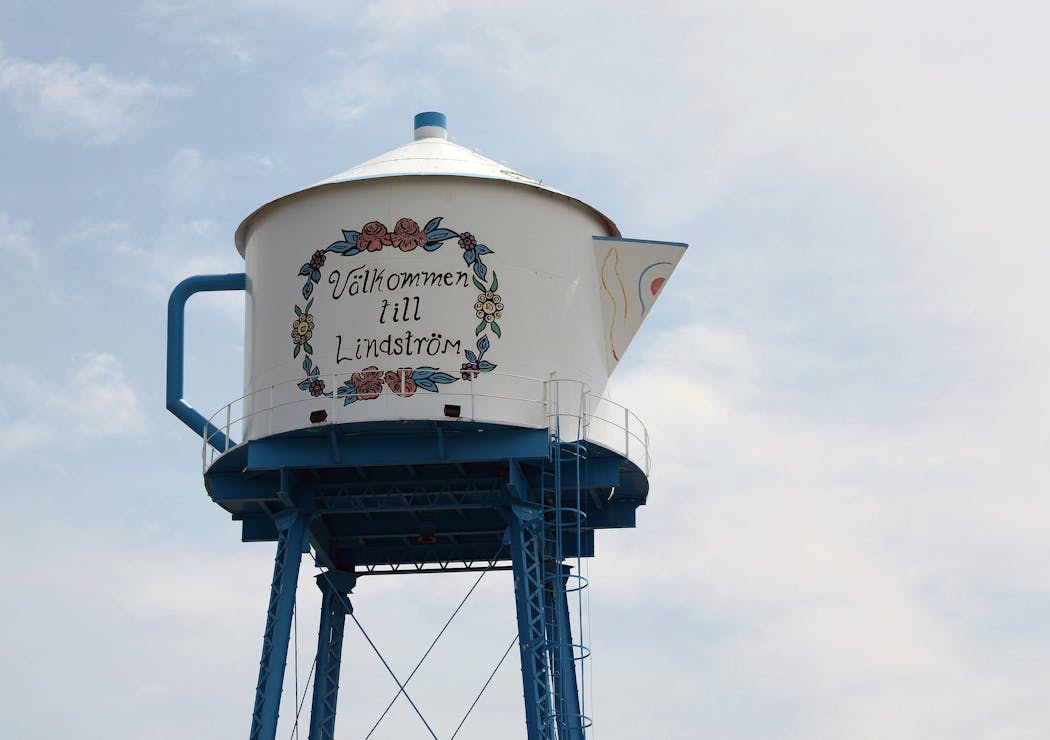Why do we have water towers and what do they do?
Why do we have water towers and what do they do?
Listen and subscribe to our podcast: Via Apple Podcasts | Spotify | Stitcher
Kelly Keegan was showing a visitor the sights of rural Minnesota when her friend asked a strange question: "What are these spaceship-looking things?"
It took a moment for Keegan, a Minneapolis attorney, to realize that he was asking about something that Minnesotans take for granted: water towers.
For Keegan, "it's always been part of the landscape, and you don't think twice about it," she said. But her visitor's query led Keegan to reach out to Curious Minnesota, our community-driven reporting project fueled by questions from readers.
"Why do we have water towers? What do they do?" she asked, also wondering whether Minnesota has more than other places.
The first question is easy. Why do we have water towers? To hold water, of course!
But seriously, cities use water towers to keep constant pressure in their system. By storing water high in the sky (most water towers are at least 100 feet tall), they get the benefit of gravity. The water in the tower pushes down and keeps the supply flowing.
That's important in case of a fire or a power outage.
In Eden Prairie, the city's two water towers, plus an underground reservoir, hold 8.5 million gallons, said Joe Dusek, the city's water treatment plant supervisor. That's more or less a day's supply, depending on the season.
Water is pumped from wells 400 feet underground to be treated, and then into the towers. Why not just pump it straight to homes and businesses? Because pumps use a lot of power. "Our biggest cost is energy, by far," Dusek said.
Still, some cities — usually large ones — don't use water towers. Minneapolis, which gets its water from the Mississippi River, doesn't have towers, using pumps to move water around the city. Chicago doesn't have towers, either.
But in general, most Minnesota cities get their water from underground aquifers. That almost always calls for a water tower, said Dan Zienty, a senior project leader with SEH, an engineering and architecture firm in St. Paul.
Although we couldn't determine whether Minnesota has more water towers than anywhere else, it's true that the towers are a Midwestern thing, according to Greg DiLoreto, a retired water utility executive in Portland, Ore., and a past president of the American Society of Civil Engineers.
"We do see a lot of water towers in the Midwest simply because you're so flat," he said. "Elsewhere, we have reservoirs, but they're tanks that are up in the hills."
Many Minnesota cities have decorated their water towers in a show of civic pride. Lindström's tower, in the shape of a coffee pot, suggests friendly hospitality. The tower in Pequot Lakes looks like a red-and-white fish bobber, while Cosmos has decorated its tower in a galactic theme.
That's something Keegan appreciates.
"It's cool how cities have used them as a source of pride," she said. "It could have been just a weird-looking utility building."
Or a spaceship.
---
If you'd like to submit a Curious Minnesota question, fill out the form below:
Read more Curious Minnesota stories:
Why does the Stone Arch Bridge cross the river at such an odd angle?
How did Minnesota become the Gopher State?
Are roundabouts really safer than traditional intersections?
Why do so many Fortune 500 companies call Minnesota home?
Should Minnesota be considered part of the Midwest?
Why is it so much harder for U students to graduate debt free compared with the 1960s?
How did Minnesota become one of the most racially inequitable states?
What is the best place, time to see northern lights in Minnesota?
How did these 11 Minnesota towns get their unusual names?
Has Minnesota every had a major earthquake?
How did the Twin Cities become a hub for Somali immigrants?
How much are electric vehicles affected by Minnesota's extreme cold?
Why does Minnesota tax Social Security benefits?
Why is Uptown south of downtown in Minneapolis?




